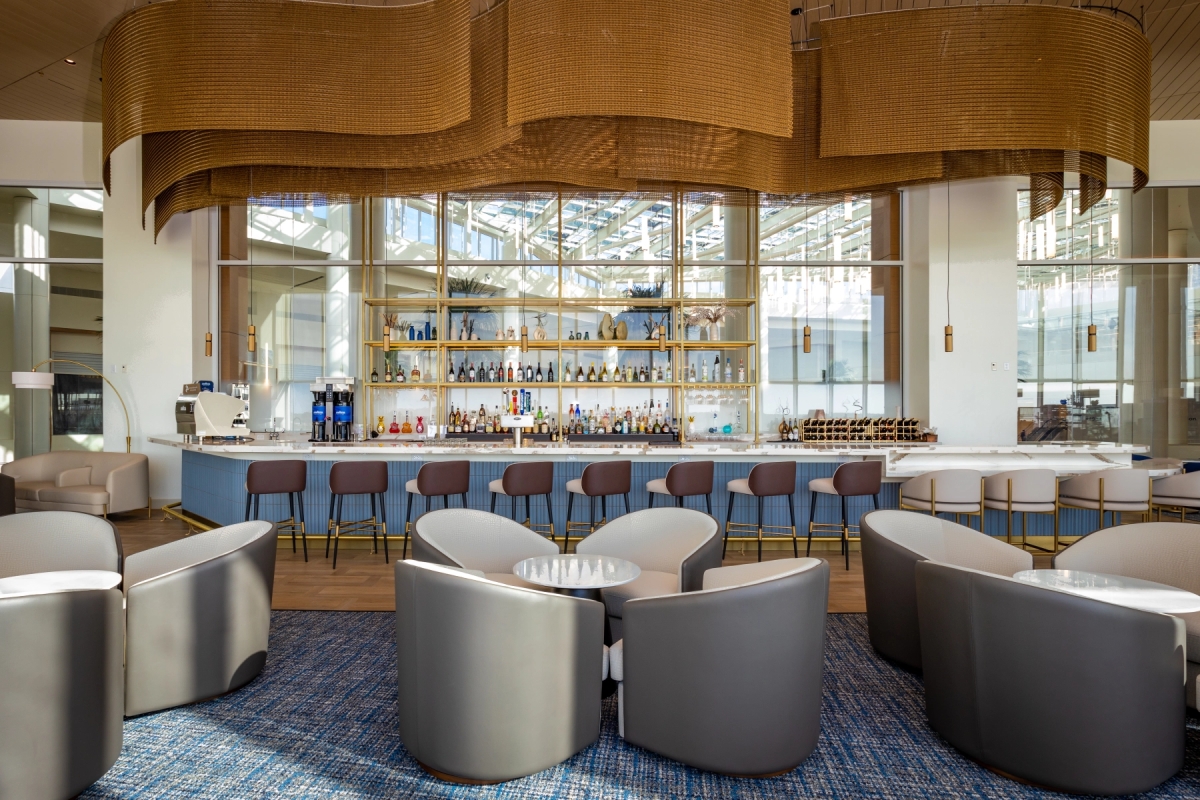
As we emerge into 2024 and airlines continue their post-pandemic growth with record profits seen by many, the race to invest into the passenger experience begins. While cabin programs can take several years to manifest, the quickest and easiest way to win over market share for the lucrative business class segment, is to reimagine the ground product, where changes can be swift, more affordable and increase overall NPS scores.

But what are we hoping to see across the global lounge scene in 2024? Here’s some predicted new trends that we hope airlines will start to embrace across their network of airport spaces around the world.
Upgrades
First of all, airlines who have held on to their mantles as lounge leaders, will soon have their position tested by swathes of new lounge openings that are scheduled to join the scene in 2024. Some of the world’s best lounges are now more than a decade old (even Virgin Atlantic’s Heathrow Clubhouse is almost 20 years old), and as such are going to be in need of some TLC to remain competitive. We’re already starting to see this with the renewal of American Airlines new spaces that commenced in 2023. But why replace perfectly serviceable lounges? Simply put, the way we interacted in lounges a decade ago, isn’t how we want to interact with them now.

We travel with more personal baggage, work in a more relaxed way, using laptops and tablets, therefore requiring side tables and charging instead of business centres, and increasingly we ‘nest’, therefore need one-stop comfortable seating where we will spend our entire stay, rather than moving from dining zones to seating zones or bars.
More theatrics
Travel is still a special experience for many, and as we start to travel in premium cabins for leisure more-so than business, airlines are having to adapt – and one easy way to surprise and delight is to create unique, theatrical elements within the lounge. From spas to a la carte restaurants or signature bars to roof terraces. Airlines need to find a way to translate their brand ethos into physical activations, doubling down on what makes them stand out. American is trying to re-inject warmth and contemporary Americana into their lounges, Turkish celebrates its roots to dining, and Air France’s new lounges celebrate French culture across the spectrum.

Airlines should start to look at food and drink ceremonies, art exhibitions, theatre rooms, custom content on screens, curated playlists, concierge services, secret cellars, co-branded limited time activations… any way to create moments that go above and beyond the normal, and elevate the passenger experience.
A sense of place
Increasingly we’re seeing two layers to lounge design. There will be the master language, that will deliver an increasingly recognisable aesthetic and service style, while a second layer will allow for local influence to increasingly deliver a true sense of place. Think signature cocktails and food that represents the region the lounge sits in, local art pieces and regionally iconic hero furniture pieces that compliment and elevate the master design language.

Airlines are increasingly connectors of a global community, and while an airline is seen as the first taste of the country it represents, it also needs to represent the key markets that are important enough for them to have satellite lounges there.
Zoning, not separation
The large seas of face-to-face seating of days gone by are increasingly becoming a thing of the past. Lounges are increasingly reflecting residential not corporate design sensibilities, and with that become smaller, more visually manageable sections to make passengers feel less like they are waiting for their flights in a chicken coup, rather a high end hotel lobby.

This is a little bit different from the ‘work zone, rest zone’ mantra, rather breaking up large seating areas into quieter nooks for people to feel at ease. American’s new lounges is a great example of how they’ve taken large expansive lounge design and broken them up with a variety of comfortable seating, even a fireplace to help break the space into more manageable zones.
Scents
A rather untapped sensory part of our flight experience, start to expect signature scents across the lounges that help create lasting sensory memories. As well as signature perfumed scents that can be used to brand lounges, think smells of freshly baked bread and coffee from dining stations or the smell of fresh flowers, and even scented hot or cold towels – something that very few lounges currently do, but would certainly be welcome. Imagine after check in, security and your trip to be able to sit down, have a glass and be handed a warm scented towel to wash off the transit experience of getting there.

It found olfaction has the strongest connectivity to our brain. It’s like a superhighway from smell to the hippocampus, and yet airline brands are yet to adopt them in a bigger way.
As I do every year, I ask on your kind support to keep things going. If you are able to donate – whatever amount – it all gets funnelled back in to the site, to keep the site full of content. And I thank you personally for your kind support.
Have you subscribed to our YouTube channel yet? It’s the perfect resource for up-to-date airline reviews.





